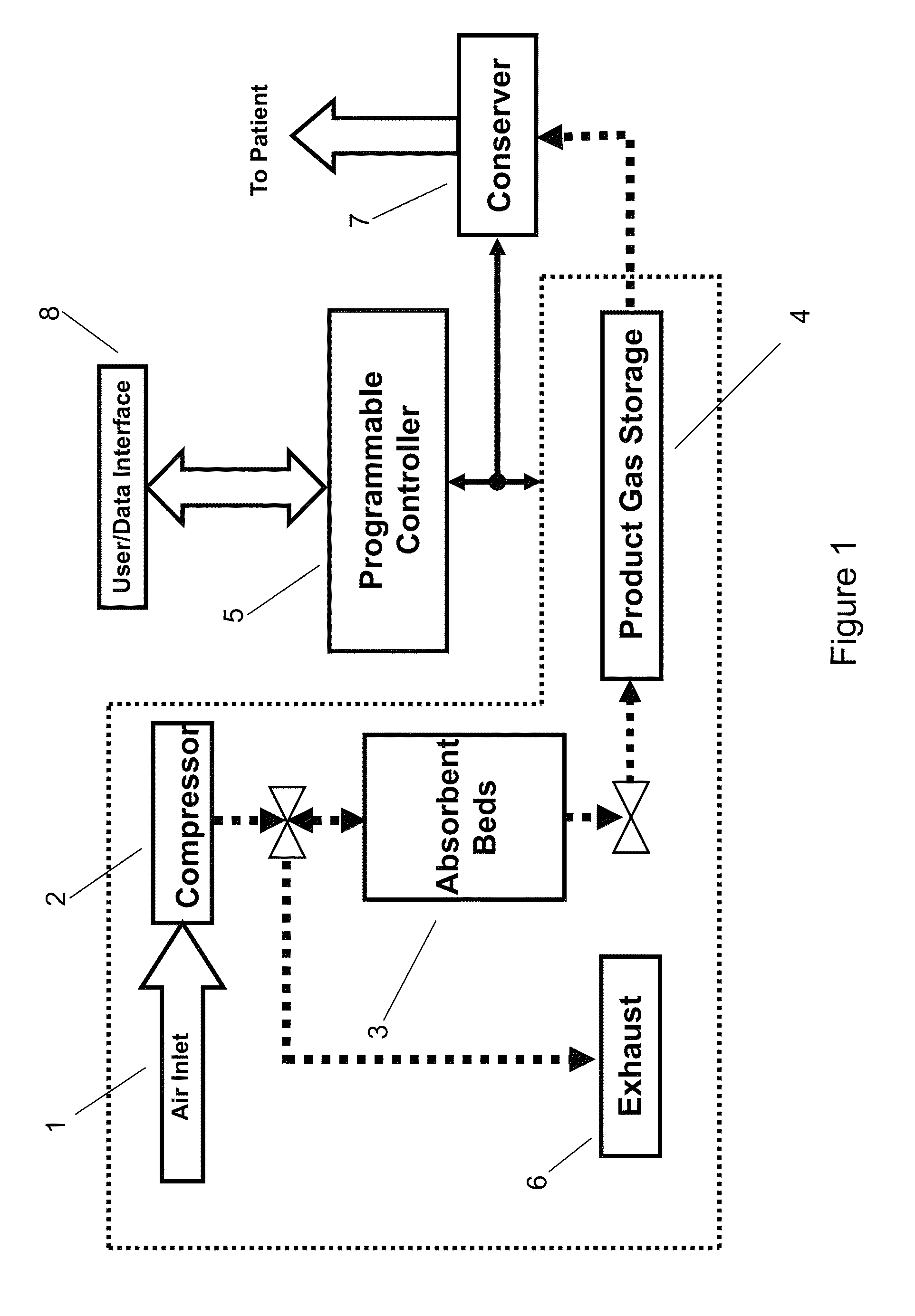Adsorber replacement notification for a portable gas concentrator
a gas concentrator and portable technology, applied in the field of gas concentrators, can solve the problems of increased maintenance interval, reduced product purity, and inability to maintain a constant state, and achieve the effect of optimizing operating efficiency
- Summary
- Abstract
- Description
- Claims
- Application Information
AI Technical Summary
Benefits of technology
Problems solved by technology
Method used
Image
Examples
Embodiment Construction
[0063]As described above, one of the main factors limiting concentrator lifetime is moisture contamination of the adsorbent materials in the adsorbent beds.
[0064]Despite the effective moisture mitigative measures described in co-pending application Ser. No. 11 / 998,389 which might remove 40-98% of water molecules from the feed gas stream, some moisture will remain in the beds 3 when the concentrator is turned off. For the case where there is a desiccant layer, even for a very dry design, the desiccant 11 exists to remove any remaining water as well as other impurities, such as CO2, from the feed gas. During operation impurities are largely removed from the concentrator, as the bed 3 is back-purged or evacuated with vacuum periodically in the Adsorption Cycle, thereby not leaving time for moisture and other impurities to diffuse into adsorbent. When the concentrator is not running, particularly for a long period of time, there will be a strong driving force to diffuse for any impuriti...
PUM
| Property | Measurement | Unit |
|---|---|---|
| pressure | aaaaa | aaaaa |
| weight | aaaaa | aaaaa |
| weight | aaaaa | aaaaa |
Abstract
Description
Claims
Application Information
 Login to View More
Login to View More - R&D
- Intellectual Property
- Life Sciences
- Materials
- Tech Scout
- Unparalleled Data Quality
- Higher Quality Content
- 60% Fewer Hallucinations
Browse by: Latest US Patents, China's latest patents, Technical Efficacy Thesaurus, Application Domain, Technology Topic, Popular Technical Reports.
© 2025 PatSnap. All rights reserved.Legal|Privacy policy|Modern Slavery Act Transparency Statement|Sitemap|About US| Contact US: help@patsnap.com



